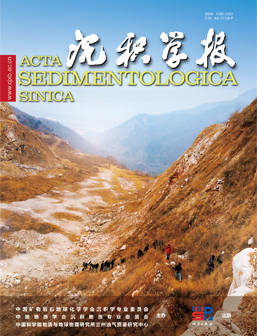The Stratigraphic Depositional Age of Shanxi Formation and Shang Shihezi Formation in Yuzhou Area and its Geological Significance
doi: 10.14027/j.issn.1000-0550.2024.025
- Received Date: 2023-09-19
- Available Online: 2024-04-07
-
Key words:
- Shanxi Formation /
- Shangshihezi Formation /
- Detrital zircons /
- LA-ICP-MS U-Pb dating /
- Yuzhou area
Abstract: The Yuzhou area is the most highly studied on Upper Paleozoic coal-bearing strata of the southern part of North China Block, which has abundant sedimentological and stratigraphic paleontological research basis, however, due to the lack of absolute chronology data, the division of chronostratigraphy and regional large-scale stratigraphic correlation are affected. In this paper, a laser ablation inductively coupled plasma mass spectrometry (LA-ICP-MS) was applied to date the U-Pb age of detrital zircon of two mudstone samples near the stratigraphic boundary of Taiyuan-Shanxi Formations and Xiashihezi-Shangshihezi Formations in Yuzhou area, and to determine their maximum depositional ages. The results show that: ①The 40 detrital zircons from the bottom sample of Shanxi Formation (ZK1006-5) constitute a continuous young component spectrum ranging from 283Ma to 343Ma, with the youngest single zircon age (YSG age) is 283±9.4Ma. The 18 detrital zircons from the bottom sample of Shangshihezi Formation (ZK2387-3) constitute a continuous young component spectrum ranging from 257Ma to 299Ma, with the youngest single zircon age (YSG age) is 257±6.8Ma.They can represent the maximum deposition age of the sample strata, indicating that the deposition time is no earlier than 283±9.4Ma and 257±6.8Ma. ②The deposition of Shanxi Formation and Shangshihezi Formation in Yuzhou area began in Kungurian and Wuchiapingian, respectively, which is consistent with regionnal biostratigraphic data. ③The Upper Paleozoic coal-bearing strata of the North China Block have obvious and large span of rock strata penetrating, and the overall performance is characterized by inward penetrating of the plate edge gradually through the new characteristics. Based on the previous studies on volcanic events in the Late Paleozoic basin of North China Block, it is concluded that the eastern margin of the basin was strongly active in which the same sedimentary period, and the induced magmatism, tectonic activity, biological succession and transgression may be related to the formation of the ancient continent of Laurisia land at the same time.
| Citation: | The Stratigraphic Depositional Age of Shanxi Formation and Shang Shihezi Formation in Yuzhou Area and its Geological Significance[J]. Acta Sedimentologica Sinica. doi: 10.14027/j.issn.1000-0550.2024.025 |






 DownLoad:
DownLoad: